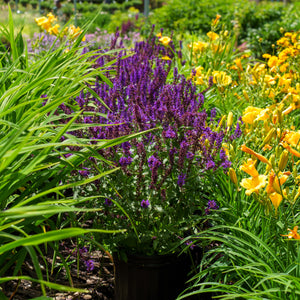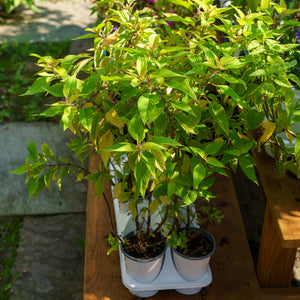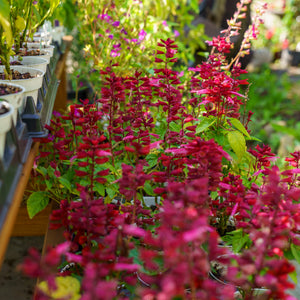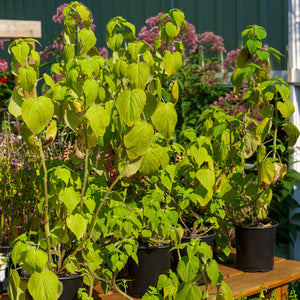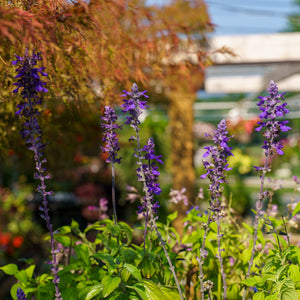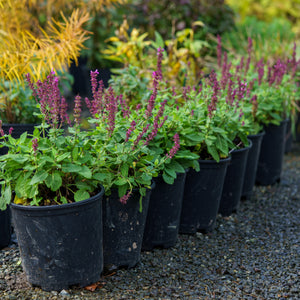The Salvia Guide
Salvia, also known as sage, is a vibrant and aromatic genus of flowering plants that adds long-lasting color and pollinator power to gardens throughout the growing season. With a wide range of varieties—spanning from compact perennials to shrubby subshrubs and tall spikes of brilliant flowers—salvia is one of the most versatile and dependable groups of plants for sunny borders, wildlife gardens, and containers.
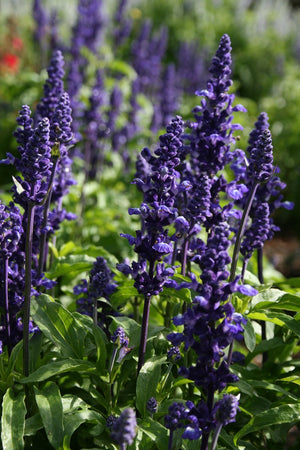
About
Salvia is a large and diverse genus in the mint family (Lamiaceae) that includes over 1,000 species distributed across the globe. In the garden, salvias are prized for their richly colored, tubular flowers and fragrant foliage, which attract bees, butterflies, and hummingbirds while deterring deer and rabbits.
- Salvia nemorosa and its many cultivars—such as 'Caradonna', 'May Night', 'Blue Marvel', 'Pink Profusion', and 'Wesuwe'—are among the most popular hardy perennials, known for their upright habit and dense flower spikes.
- Salvia greggii and Salvia microphylla varieties like 'Hot Lips', 'Mirage Cherry Red', and 'Mirage Deep Purple' thrive in hot, dry climates and bloom profusely from summer to fall.
- Salvia guaranitica 'Black and Blue' and 'Rhythm & Blues' offer dramatic deep blue flowers and a tall, bushy presence that hummingbirds adore.
- Specialty hybrids such as 'Rockin' Fuchsia', 'Wendy's Wish', and 'Indiglo Girl' combine ornamental appeal with continuous bloom cycles.
- For unique foliage, Salvia argentea 'Artemis' offers silvery leaves and subtle flowers, while Salvia elegans 'Golden Delicious' provides bright chartreuse foliage and pineapple-scented leaves.
Salvia’s diversity ensures there’s a perfect type for nearly every garden style, from prairie and cottage to tropical and Mediterranean designs.
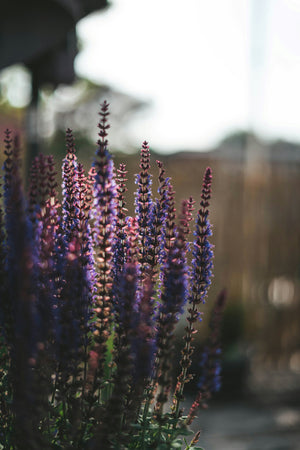
PLANTING
Planting salvia is simple and rewarding with the right preparation:
- USDA Hardiness Zones: Varies by species; Salvia nemorosa hardy to Zone 4, Salvia greggii and Salvia guaranitica to Zones 7–10.
- Soil: Well-drained, average to sandy soil. Avoid heavy, soggy conditions.
- Sunlight: Full sun (6+ hours/day) encourages best bloom and strong stems. Some types tolerate partial sun.
- Spacing: Space 12–24 inches apart depending on mature size.
- Planting Time: Plant in spring or early fall to allow roots to establish before extreme weather.
When planting, dig a hole twice the width of the container, place the plant at soil level, backfill with native soil, and water thoroughly. Mulch lightly to retain moisture and suppress weeds.
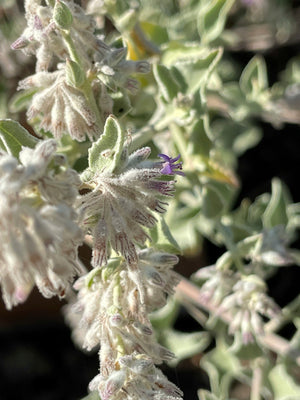
CARE
Salvia is generally low-maintenance but benefits from regular upkeep to look its best:
- Watering: Water regularly during establishment. Mature plants are drought-tolerant but appreciate occasional deep watering during dry spells.
- Fertilizing: Use compost or a slow-release fertilizer in early spring. Over-fertilizing can reduce flower production.
- Deadheading: Remove spent flowers to encourage reblooming, particularly in Salvia nemorosa types.
- Pruning: Lightly shear back after the first bloom cycle to encourage a flush of new growth. Cut to the ground in late fall or early spring depending on variety.
- Pests & Diseases: Rarely affected by pests. Good airflow prevents powdery mildew or fungal issues in humid areas.
Divide clumping varieties every few years to maintain vigor and shape.
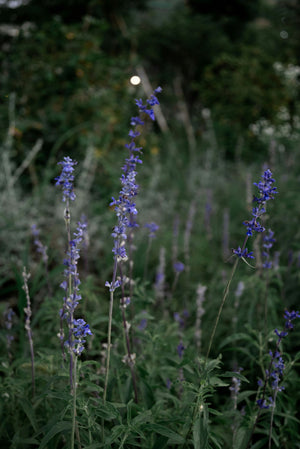
HOW TO USE
Salvia’s colorful spires and aromatic foliage make it a standout in many garden styles:
- Pollinator Gardens: Hummingbirds, bees, and butterflies flock to salvia blooms. 'Black and Blue', 'Rockin' Fuchsia', and 'Wendy’s Wish' are especially attractive.
- Borders & Edging: Compact types like 'Marcus', 'Sallyrosa Jumbo Pink', and 'Crystal Blue' create neat, vibrant edging for beds and walkways.
- Cottage & Herb Gardens: Pair with echinacea, rudbeckia, yarrow, and lavender for layered, wildlife-friendly displays.
- Containers: Smaller cultivars like 'Ballerina Pink' and 'Snow Kiss' shine in pots with good drainage and full sun.
- Foliage Contrast: Combine with silver-leafed plants like artemisia or lamb’s ear to enhance salvia’s vivid tones.
Salvia mixes beautifully with ornamental grasses, agastache, coreopsis, nepeta, and gaillardia for long-lasting color and structure.
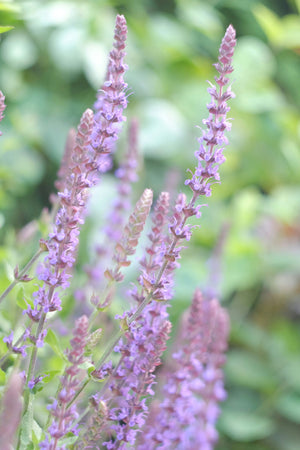
COMMON QUESTIONS
- Is salvia a perennial? Many species are perennial, including Salvia nemorosa and Salvia greggii. Some others are annuals or tender perennials in colder zones.
- How to plant salvia? Choose a sunny site with well-drained soil. Plant at soil level, water in, and mulch to conserve moisture.
- What to plant with salvia? Great companions include echinacea, rudbeckia, yarrow, nepeta, coreopsis, and ornamental grasses.
- When to plant salvia? Spring or early fall is ideal for giving plants time to establish roots.
- When to prune salvia? Prune after flowering or in late fall/early spring. Light shearing can encourage rebloom.
- How to prune salvia? Cut stems back by one-third after flowering or remove deadwood in early spring. Cut hardy types to the ground if needed.
- Is salvia toxic to dogs? Salvia is generally non-toxic to dogs, but always monitor pets that chew on plants.
- Is salvia toxic to cats? Salvia is not considered toxic to cats, though some sensitive pets may still have mild reactions.
- Do deer eat salvia? Salvia is typically deer-resistant due to its aromatic foliage.
- Do rabbits eat salvia? Rabbits usually avoid salvia, making it a good option for critter-prone gardens.
Conclusion
Salvia is a reliable, colorful, and aromatic addition to any sunny garden. With its wide range of flower colors, growth habits, and adaptability to different climates, it fills a vital role in pollinator gardens, borders, containers, and herb landscapes. Whether you're planting bold bloomers like 'Indiglo Girl' or cottage classics like 'Caradonna', salvia offers season-long color, minimal maintenance, and lasting visual impact.
The Salvia Collection
Sold Out
Sold Out
Sold Out

